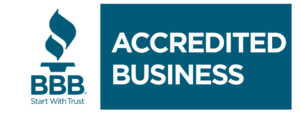Bankruptcy After Lockdown?
The last year has been challenging for all of us in many ways. Americans have lost jobs at a rate not seen since the Great Depression. Industries–especially those in retail, tourism, and hospitality–have experienced crushing lockdowns. The government has passed a number of COVID-19 bills to mitigate the worst of these effects, beginning in March of 2020 with the CARES Act and most recently with the American Rescue Plan on March 11, 2021. The direct payments to the majority of Americans and the assistance provided to businesses have been beneficial. But they cannot eliminate all the damage done. And they cannot continue indefinitely.
Now is the Time to Act
Bankruptcy filings are low just now, but experts anticipate that they will rise significantly. That means that the bankruptcy court will be flooded with cases, and delays due to packed court schedules may result. Bankruptcy judges may feel pressured to rush through cases, making snap decisions detrimental to those involved. Now is the time to take a long, hard look at your financial situation and decide what the best way forward will be.
Personal Bankruptcy
More than 22 million people lost their jobs during this pandemic, and Moody’s predicts that those jobs will not be recovered until 2024. If you’re one of those who have suffered this loss, you may well benefit from declaring bankruptcy. While the additional unemployment benefits have been extended, they will not last forever, and unemployment benefits rarely compare positively with actual employment. The moratorium on evictions goes until June 30, 2021, but what happens on July 1? Perhaps you are one of the 7.7 million people who lost their employer-sponsored medical insurance; you don’t need to have had COVID to have incurred significant medical debt. Whatever your situation, you should consider your bankruptcy options now rather than later.
Chapter 7 Bankruptcy
Chapter 7 bankruptcy is the one most commonly used by individuals (or couples). It is often called ‘Liquidation’ bankruptcy, but the experts at Burr Law can make sure that you get the exemptions you’re entitled to, and you will almost certainly keep your house and vehicle. Chapter 7 completely eliminates your unsecured debt, and it takes between four and six months to complete. It is means tested; your income must be equal to or below the median household income of your state. For Wisconsin, that is $67355 as of 2019 (the last year for which we have figures).
Chapter 13 Bankruptcy
Chapter 13 bankruptcy is often called ‘Wage-Earners’ bankruptcy since it functions more like a partial debt-repayment plan. The bankruptcy court assigns a trustee who examines your entire financial situation, negotiates the elimination or reduction of your debt with your creditors and establishes a realistic monthly payment plan. The whole process lasts between three and five years. While this option is not means tested, there are indebtedness restrictions. To be eligible to file for Chapter 13 bankruptcy, you must have less than $419,275 in unsecured debt, like credit cards or medical bills, and you also can have no more than $1,257,850 in secured debts, which includes mortgages and car loans.
Business Bankruptcy
Chapter 11 Bankruptcy
Most businesses choose to file Chapter 11 bankruptcy; it is a reorganization of the business that allows it to continue to trade in the marketplace while repaying creditors. Generally, the business itself proposes the reorganization plan. It is also possible to file for Chapter 11 bankruptcy more than once, without an onerous waiting period. This is informally called Chapter 22 bankruptcy. When you file for Chapter 11 relief in bankruptcy court, no trustee is appointed. Instead, you become the Debtor in Possession (DIP). You have the exclusive right to propose a reorganization plan for at least 4 months and up to 18 months. Once you do so, your creditors need to agree to the plan, and the court needs to approve it. That is called confirmation and in doing so, the court will decide whether the plan demonstrates 4 factors: feasibility, good faith, best interests of the creditors, and fairness. The whole thing usually takes between 6 months to 2 years.
Chapter 12 Bankruptcy
Chapter 12 bankruptcy is specifically designed for family farmers and family fishermen. It recognizes the greater debt burden that family farmers and fishermen carry but treats them more like individuals than business bankruptcies. The process is more streamlined and less expensive than Chapter 11, for instance. If you’re a farmer, in order to qualify for Chapter 12, your total debts must not exceed $4,153,150, and 50% of them must come from the farming operation. If you’re a fisherman, your total debts must not exceed $1,924,550, and 80% of them must be associated with your fishing enterprise. In both cases, more than 50% of your gross income should come from your farming or fishing. This bankruptcy pays off all or a portion of your debts over 3 years, though that can be extended to 5 years if necessary. You continue operating your farm or fishing business during the bankruptcy process.
Call the professionals at Burr Law to help guide you through the decision-making, and if necessary, the bankruptcy process itself. You’ll be glad you did.


